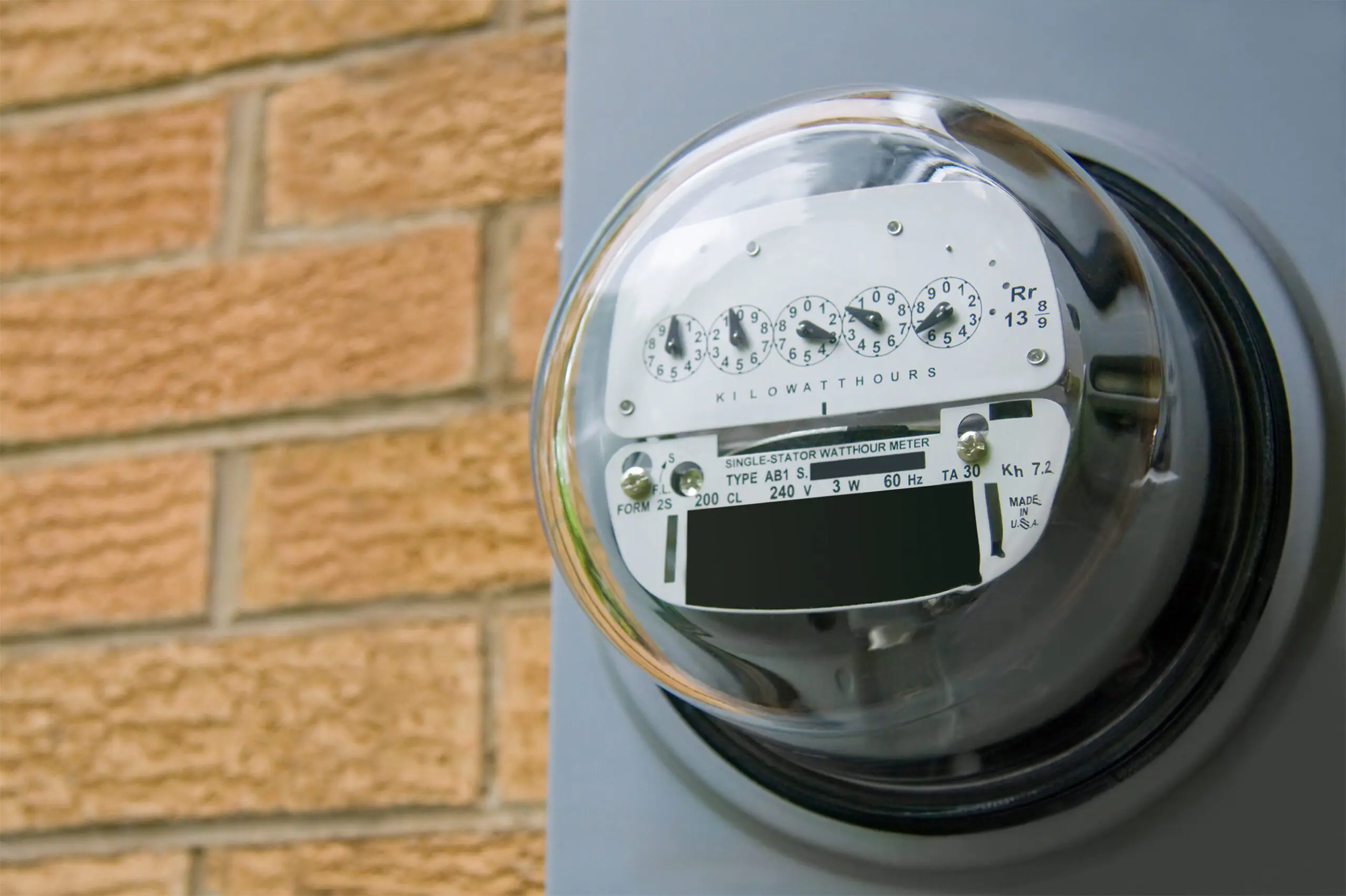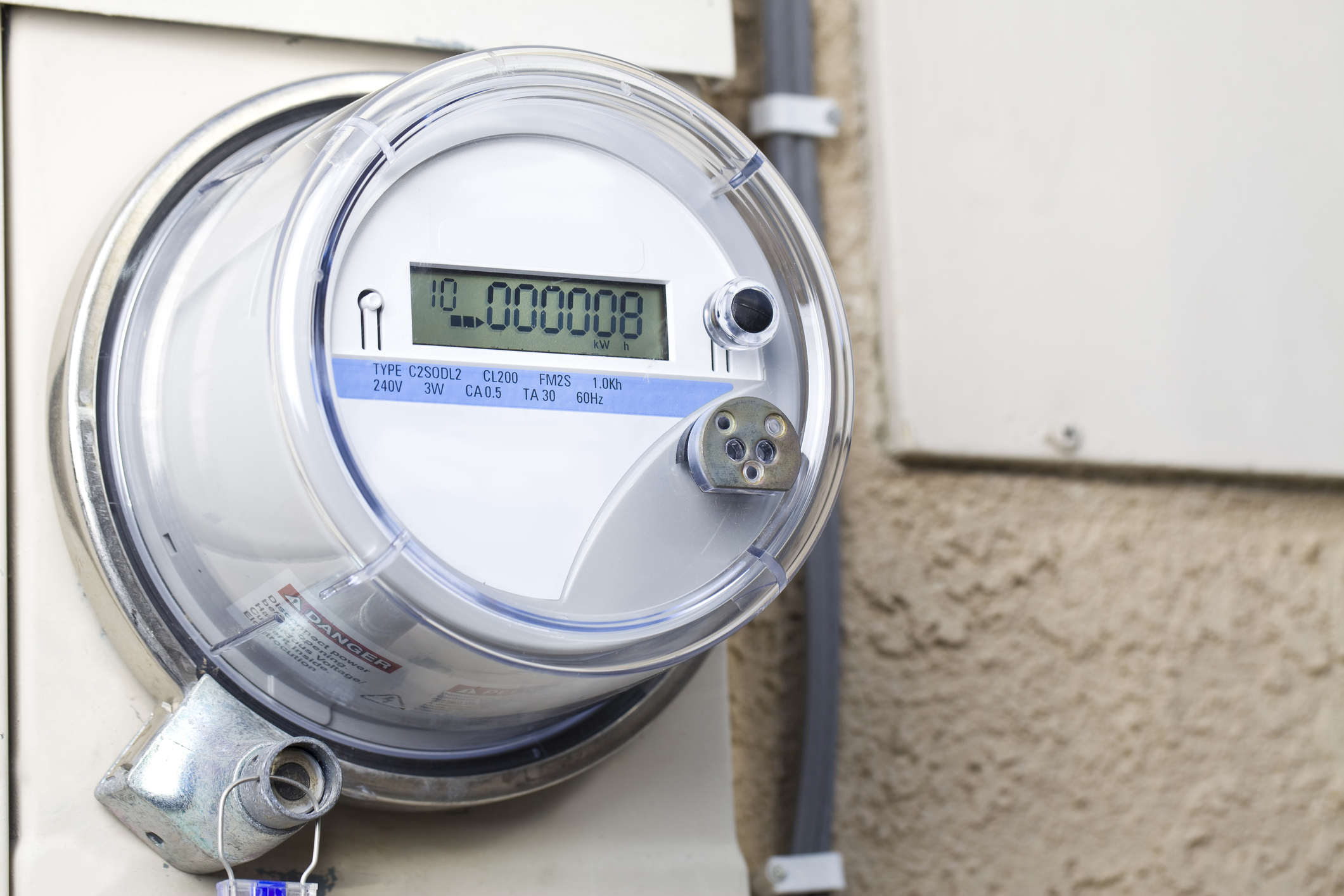If you’ve heard the term “smart meter,” you may have asked, are they so smart? And what the heck do they do, anyway?
Before the introduction of smart utility meters in the 1970s, utilities figured out how much to bill you with the help of analog utility meters. Meters were located on the wall outside your home, normally through the wall from your electric panel, and where your gas enters your home, usually in front of your house facing the street. The flow of electricity into the utility meter turned small gears, which measured how much electricity flowed into your house as you turned appliances on and off. A utility company employee stopped by on a monthly or bi-monthly basis to read the utility meter so that your charges would be fairly accurate over time.

In today’s digital age, smart utility meters measure your gas and electric usage but they go a step further by gathering more detailed data and communicating directly with your utility. Like old style meters, smart meters are made of glass and give you a real-time display of the kWh (electric) and Therms—a Therm is equivalent to 100,000 Btu, 29 kWh, and one hundred cubic feet of natural gas—you are using over time, a snapshot of your current energy use.
Since your home’s energy data is sent digitally to the utility, no one has to come and read them manually, which saves many hours of labor. Smart meters communicate by using radio frequency transmitters that transmit data through secure networks to your utility rather than connecting to your household W-Fi network or to the Internet. Because the data is digital, your utility can analyze it and share some basic insights. For instance, you can go to the utility’s website to see the history of your energy use and compare your usage with that of your neighbors in similar-sized homes with the same number of people.
Your gas meter communicates with your utility in a similar way, through secure networks. The latest devices use ultrasonic metering in real time to keep track of your gas use, and can perform self diagnostics. For example, if your gas use rises rapidly it may indicate a dangerous gas leak.
Today’s smart meters have somewhat limited data capabilities. Although the data is gathered continuously, it’s batched up and transmitted to the utility’s servers on a delayed basis. As a result, if you check into your online utility account, you can typically see your home’s energy consumption yesterday but not today’s data. Still this is a big improvement over a monthly paper bill.
Utility companies analyze your data and make it available to you in raw form or in the form of a bar graph comparing your energy use over time or comparing your use to others. You’ll be able to tell how you’re doing based on the smiling, neutral, or happy face on your bills.
Advanced smart meters that are compatible with the Sense Home app go to the next level by providing you with real-time data, similar to having the Sense Home Energy Monitor installed in your electrical panel. Sense-capable smart meters will soon be deployed to some utility customers in New York and Massachusetts
Smart Meters and Time of Use Rates
With more extreme weather due to climate change, and the use of more renewable energy sources on the grid, utilities are coping with bigger peaks in energy demand that don’t always coincide with the cleanest energy sources, so they’re looking for ways to influence when customers use energy. For instance, some utilities have Time of Use (TOU) rates. You get charged more during peak energy use times and less during off-peak, to prompt you to use less energy during peaks. Turning down your air conditioning during a peak event can save you energy and money while helping the utility meet its demands for electricity.
What if those adjustments could be made automatically instead? Smart meters allow your household to participate in voluntary energy efficiency and peak-load shaving programs that, for example, allow your utility to raise the air conditioning set point during peak energy use during summer afternoons and evenings and to nudge your thermostat to save you money and energy at night or when you are away. In this case, you must allow the utility permission to communicate with your thermostat via your smart meter and make small adjustments to your temperature settings.
We all have some skin in the game. For example, shaving off energy use at home saves you money and helps the utility minimize the use of expensive and dirty “peaker plants” that act as a reserve when the grid is close to being overwhelmed with demand and extra sources are needed.
Energy Savings Through Demand Response Programs
In many states, utilities can aggregate thousands of household appliances for demand response programs. In California and New York, for instance, regulations require that residential water heaters be manufactured with hardware and software capabilities to moderate their energy use in response to incentive payments or changes in the price of electricity. Major manufacturers like Rheem already offer several models of demand-response-ready water heaters.
Through these programs, utilities can adjust residential water heaters to decrease winter and summer peaks. Reducing the load for each home across the utility district means that individuals will experience small changes but the whole system benefits. To avoid snapback events–a surge in demand when all the water heaters return to their normal settings–utilities stagger demand response times across their customer base.
Most demand response programs are geared towards electricity use and not gas use. However, that may change since the potential is significant, even though natural gas use is declining in the effort to move to cleaner energy sources.
Smart Meter Myths
With new regulations to save energy more widely, and the adoption of innovative smart meter technology, utilities are working to educate consumers, explain the benefits of their energy efficiency and energy conservation programs, and allay some fears.
For instance, you can always opt out of a utility’s smart meter program, but it may cost you extra to revert to old fashioned, manual data collection. Your data is sent from the smart meter over secure dedicated networks, not through home Wi-Fi or the internet, so your data is relatively safe. There are no demonstrated health impacts from radio transmissions from your smart meter. You will have much less exposure to radio frequency waves than you would from a cell phone.
Smart meters are more accurate than the old mechanical meters, so you are only charged for the energy you use. Some people have experienced an increase in energy use after switching to a smart meter, especially if the meter they are replacing is very old. It’s possible your old meter slowed with old age and was not keeping up with your actual energy consumption.
Weather is variable, making it hard to tell if an increase in your utility bill after a smart meter replacement has been triggered by hot spells or cold snaps. If you see a big change, you should also check to see if the utility has changed its rates and started charging higher energy costs per kWh or Therm. Of course, you can also use the Sense monitor and app to see if your energy usage changes before and after a smart meter is installed.
Keeping Customer Data Private
On the privacy front, the rules and regulations that govern utility data security are not uniform since utility regulations differ depending on your state and whether you live in Europe or North America. People have legitimate concerns about how their personal and household data is used. But some general principles are being widely adopted by utilities and their regulators:
- Transparency so that utilities explain to consumers how their data will be used.
- Individual consent to how data is collected, used and shared.
- Minimal data collection, collecting only what’s needed for given program goals.
- Data is used only for the purposes advertised.
Provisions for customers to contest inaccurate energy use. - Data security is required.
- Third party certification and authorization, such as that provided by state utility commissions.
In the larger context of climate change, smart meters have an important role to play, helping you to partner with your utility to conserve energy, take advantage of clean energy sources and have a reliable power supply from the grid.
